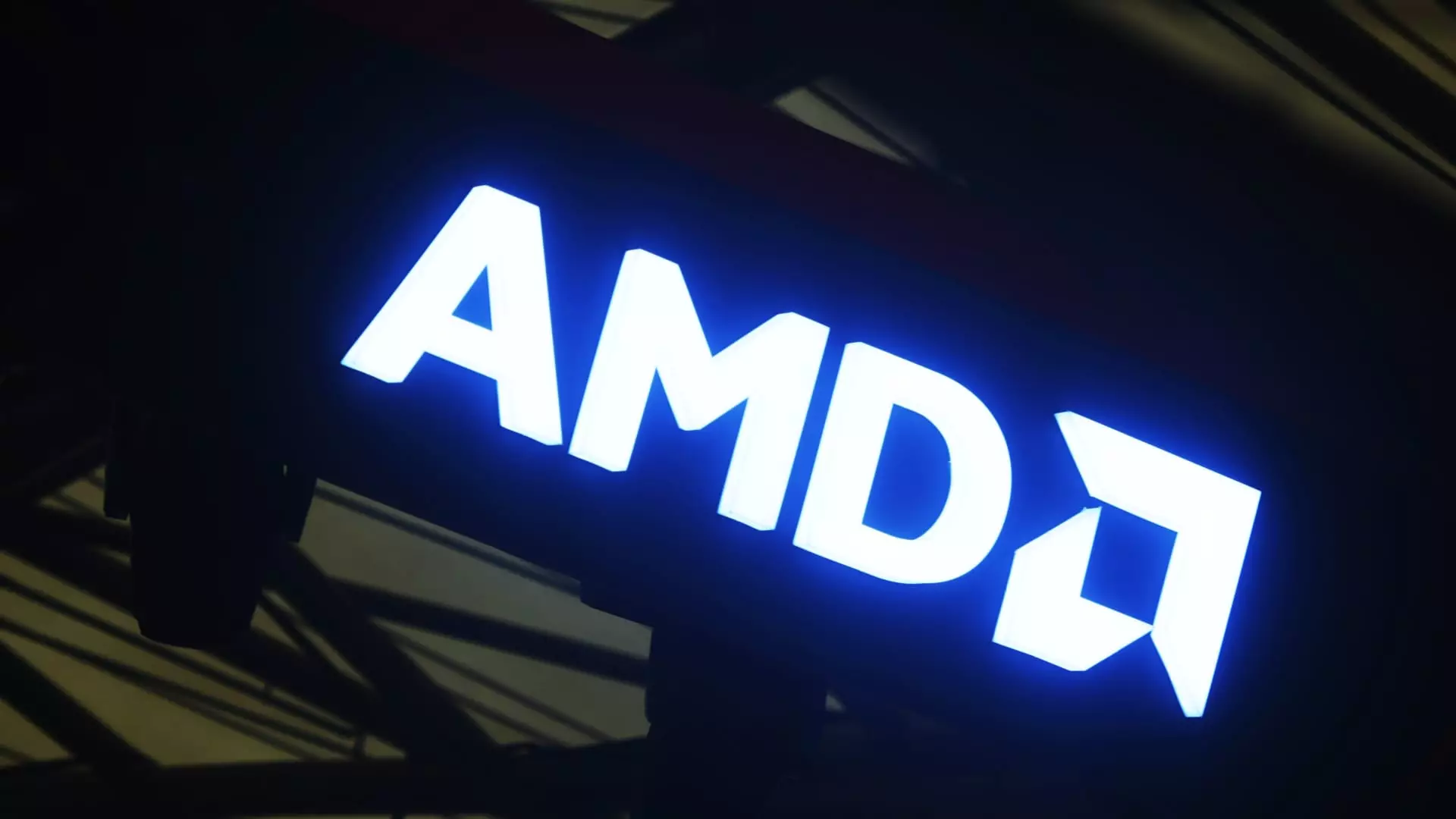In today’s competitive tech landscape, Advanced Micro Devices (AMD) finds itself at a significant crossroads, burdened by rising tariff risks and fierce price competition. The recent downgrade from KeyBanc’s analyst John Vinh highlights a worrisome reality for the chipmaker: the potential for stagnation or even regression amidst turbulent market conditions. As such, the landscape has become increasingly precarious for AMD as it trades in a volatile market, with its stock plummeting over 30.5% this year alone. This trend raises serious questions about AMD’s resilience and adaptability in an environment where economic pressures manifest in both local and global markets.
The role of tariffs, particularly involving Hong Kong and mainland China, poses significant threats. Vinh’s acknowledgement of AMD’s dependence on China, especially in the AI sphere, paints a grim picture. A potential slowdown in China not only jeopardizes demand but also suggests that AMD may be left scrambling after competitors, particularly Nvidia (NVDA), who currently maintain a commanding foothold in advanced GPU technology. AMD’s hope for leveraging an expanding Chinese market may well be an illusion, one that could lead to significant losses if policies tighten further.
Competition: The Unforgiving Battleground
If the threat of tariffs were not enough, AMD faces a formidable challenge from its rivals. Nvidia, often viewed as the vanguard of innovation in graphics processing units, has advanced well ahead with its GB200/NVL platform, leaving AMD in potentially vulnerable territory. Vinh’s analysis paints AMD as a competitor playing catch-up in the AI GPU space. Adding insult to injury is the resurgence of Intel, whose aggressive pricing strategy has thrown AMD into an unwelcomed price war. Such a situation not only jeopardizes AMD’s market share; it also raises legitimate concerns about enduring gross margins.
Price wars are a double-edged sword, and if AMD finds itself pressured to cut prices in response to Intel’s Lunar Lake launch, the repercussions may be severe. With analysts indicating that AMD’s necessity to engage in these price cuts could range between 20-40%, the question emerges: at what cost? Lowering prices may provide a temporary buffer against market losses, but such strategies can also erode brand value and hurt long-term profit potential.
Future Growth: A Flickering Flame
The skepticism regarding AMD’s growth in AI is not just academic—it’s indicative of the company’s core vulnerabilities. Vinh believes that beyond China, the prospects for growth in AI GPUs are scant, with current estimates placing 2025 MI308 GPU volumes at a mere 300,000 units. Such figures evoke a sense of foreboding regarding AMD’s ability to thrive in the AI boom that many tech aficionados expect to be the cornerstone of future developments. Compare this to Nvidia’s robust foothold, which casts a long shadow—one that AMD might be unable to escape.
While some analysts remain positive about AMD, buoyed by a general bullish sentiment with 32 out of 50 rating it as a buy or strong buy, one must question the underlying conviction: Are they ignoring the red flags? An average price target implying over 70% upside sounds attractive, but offers little reassurance without a strong and clear growth trajectory. Are investors truly ready to bet on a company increasingly burdened by external pressures and internal challenges?
The Investment Dilemma
AMD’s stock, though trading at what appears to be an appealing multiple at 13x 2026 EPS estimates, must be weighed against the risks that loom ahead. Semiconductor stocks necessitate clarity and confidence in gross margins, which Vinh warns may be increasingly uncertain due to aggressive competitive tactics. Investors are left to grapple with a harsh reality: the tech industry is unforgiving, and resilience is paramount.
The ongoing turbulence in both domestic and international markets adds layers of complexity to the investment narrative surrounding AMD. The collective implications of competition, shifting demands, and tariff uncertainties cultivate a perilous atmosphere. Experience teaches us that strong fundamentals can be quickly overshadowed by external chaos; AMD finds itself on that precarious ledge, with its future hanging in the balance.
In a territory riddled with risks and volatility, AMD’s journey ahead could very well dictate its status in an industry where only the most adaptable survive. The strategic gambits it undertakes in the coming months will not only define its standing in the semiconductor say but may also signal broader trends in the tech battlefront. The core challenge remains: Can AMD rise to the occasion, or will it be swept away by the tide of external pressures and fierce competition? Only time will tell.

